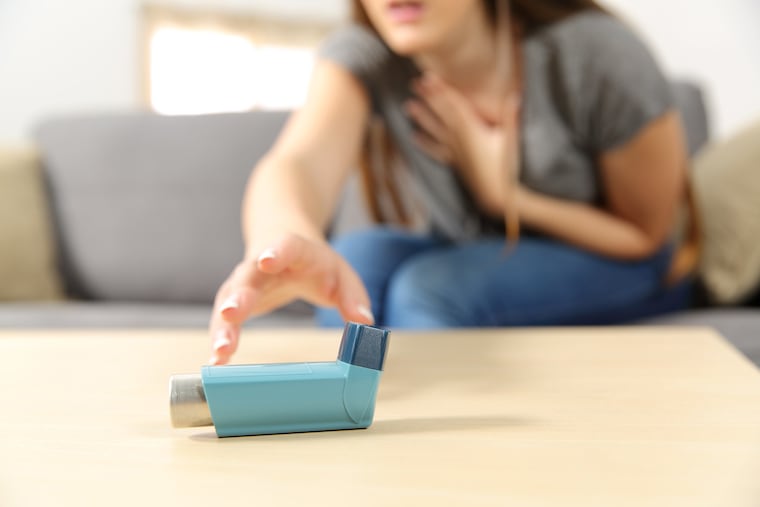Asthma season is approaching. Follow these tips for better breathing | Expert Opinion
Make sure your child has up-to-date medications and medical forms before the school year starts.

Summer is winding down and back-to-school events are heating up.
Teachers are readying their classrooms, parents are shopping for back-to-school supplies. And pediatricians and school nurses are anxiously preparing for “asthma season.”
One in four children in Philadelphia has asthma, and in communities with fewer resources, that number is much higher.
The rate of childhood asthma in Philadelphia is three times the national average. Black and Latinx children are four times as likely to be hospitalized compared to white children and account for almost all of the asthma-related deaths in Philadelphia.
» READ MORE: 'MINUTES TO TURN THIS AROUND'
Reasons for these racial disparities have been well documented and include poor housing stock, increased air pollutants, higher heat indexes, and other poverty-related stressors that make it more difficult for parents and schools to keep their children safe from asthma attacks.
Asthma-related symptoms tend to ramp up when school starts, as temperatures drop and cold viruses spread easily in overcrowded classrooms. In the first few weeks of school, asthma is a leading cause of school absences and caregiver missed workdays in order to take care of their ill child.
Scientific advances in pediatric asthma care have given us the tools to allow children to learn, play, and sleep without asthma symptoms such as wheezing, coughing, and nighttime shortness of breath.
Here is a back-to-school asthma checklist that can help:
Try to remove asthma triggers at home such as dust, cockroaches, and secondhand smoke. Programs such as CAPP (the CHOP Community Asthma Prevention Program), Room2Breathe, Rebuilding Together Asthma Reduction Program, and the Quit Line can help.
Give your child their daily controller medications as prescribed to keep their lungs healthy.
Schedule your child to see their doctor or nurse practitioner before school starts to get an asthma checkup.
Make sure all of your child’s asthma medications are current (unexpired) and call your provider for new ones if they are expired.
Send your child to school with a new inhaler (schools won’t take one if already used), a spacer, a medication administration form (MED-1 form), and an asthma action plan. Without these, the school nurse cannot administer any asthma medications to your child. Don’t forget to get these forms from your health-care provider before school starts.
Learn all you can about asthma from trusted sources like chop.edu/asthma-resources and sesameworkshop.org/topics/asthma/.
Every child deserves to have an asthma-free school year in 2024 and beyond. Let’s band together as a city to help make this happen.
Daniel R Taylor is an associate professor at Drexel University School of Medicine and pediatrician at St. Christopher’s Hospital for Children. Tyra Bryant-Stephens is the medical director of the Community Asthma Prevention Program and chief health equity officer of the Center for Health Equity at Children’s Hospital of Philadelphia.